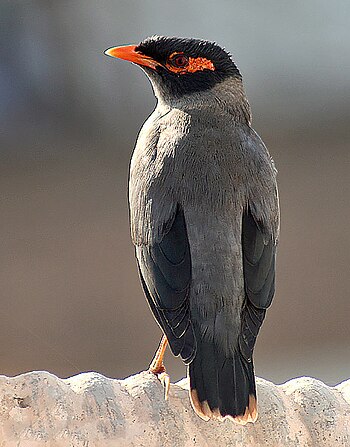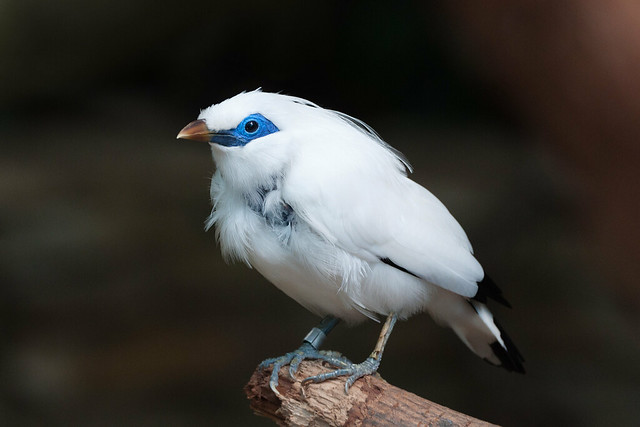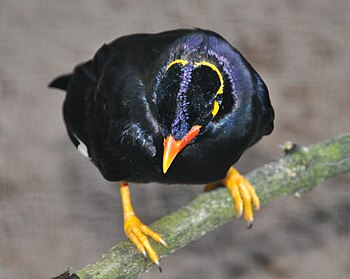(Original Title: Rainforest Birds - Bank Myna)
 |
| Bank Myna( Acridotheres ginginianus ) (Photo credit: Wikipedia) |
Bird Name:
Bank Myna
Latin Name:
Acridotheres ginginianus
Status:
Least Concern
Scientific Classification:
Kingdom: Animalia
Phylum: Chordata
Class: Aves
Order: Passeriformes
Family: Sturnidae
Genus: Acridotheres
Species: A. ginginianus
General Information:
The Bank Myna is an endemic species of South Asia, where it is known locally by a diverse collection of names, including the Ganga Myna, the Bardi Myna, and the Daryl Myna. This bird is similar in its coloration to the Common Myna, with which it also shares its range, but is smaller. It is a gregarious bird and is often seen in flocks during the breeding season.
Physical Description:
On average it is 8 - 8.5 inches in length. It is a stocky bird, blue-grayish in plumage with darker colored wings. It has a black head with an orange bill and orange eye patches. The sexes are similar in appearance, but the juvenile is paler and browner in color.
Diet:
It feeds on fruits, grains, and insects. Because it feeds on sorghum, it can be destructive to crops. At the same time, the Bank Myna also eats pest insects, making it beneficial to crops as well.
Habitat:
It is often found in riverbank habitats
as well as in open country and near human habitation. Its range covers portions of Pakistan, northern Indian and east to Bangladesh. Individuals have also been spotted as far as Afghanistan. It utilizes a variety of spaces for nesting, including tunnels in riverbanks, earthen wells and sides of disused brick kilns.
Reproduction:
The nesting season for the bird occurs from May to August, principally from April to June. The female generally lays 3 - 5 glossy pale-blue eggs per clutch.
Tony Mandarich is an expert on a wide array of topics. Article Source: EzineArticles |



